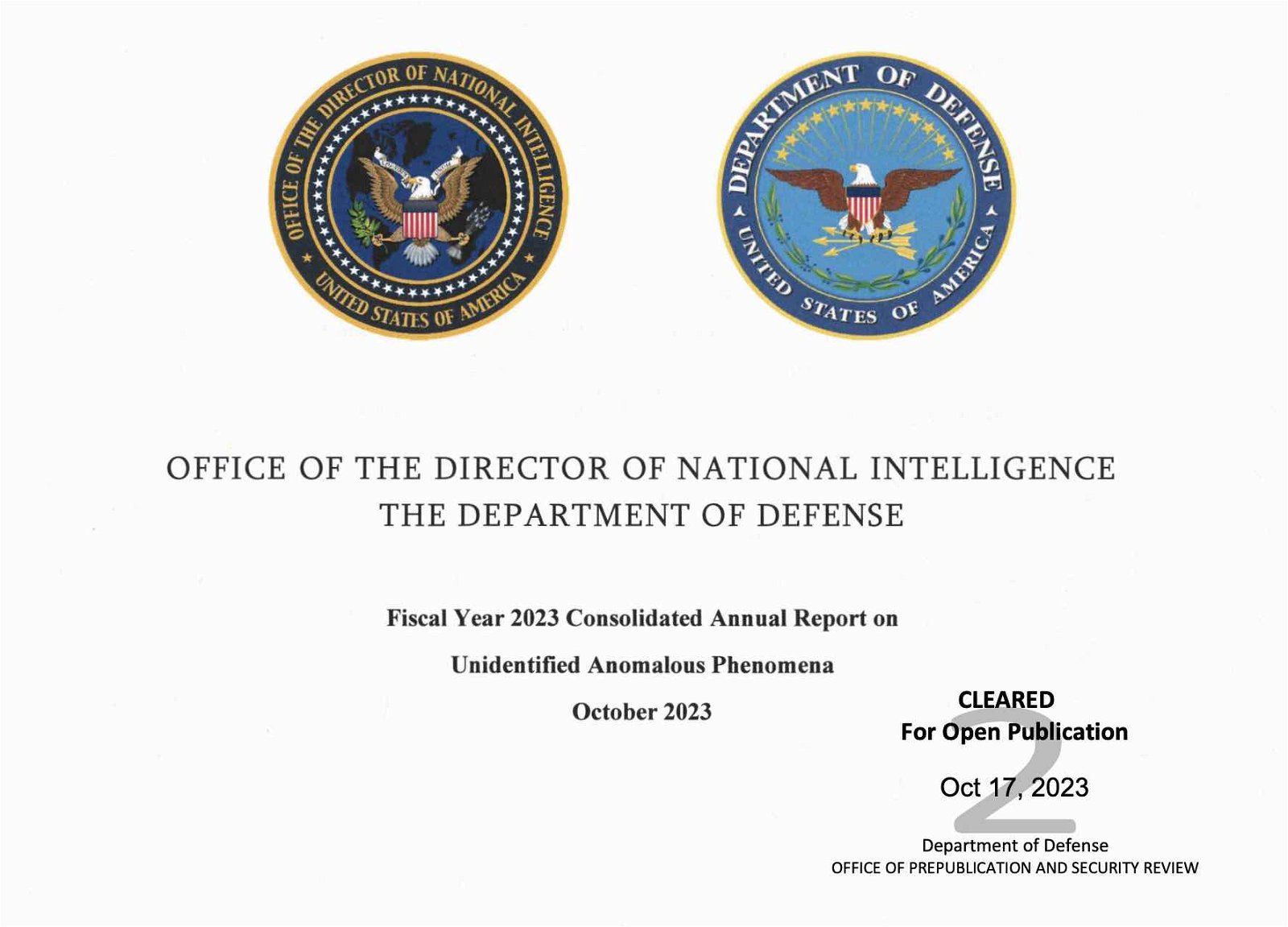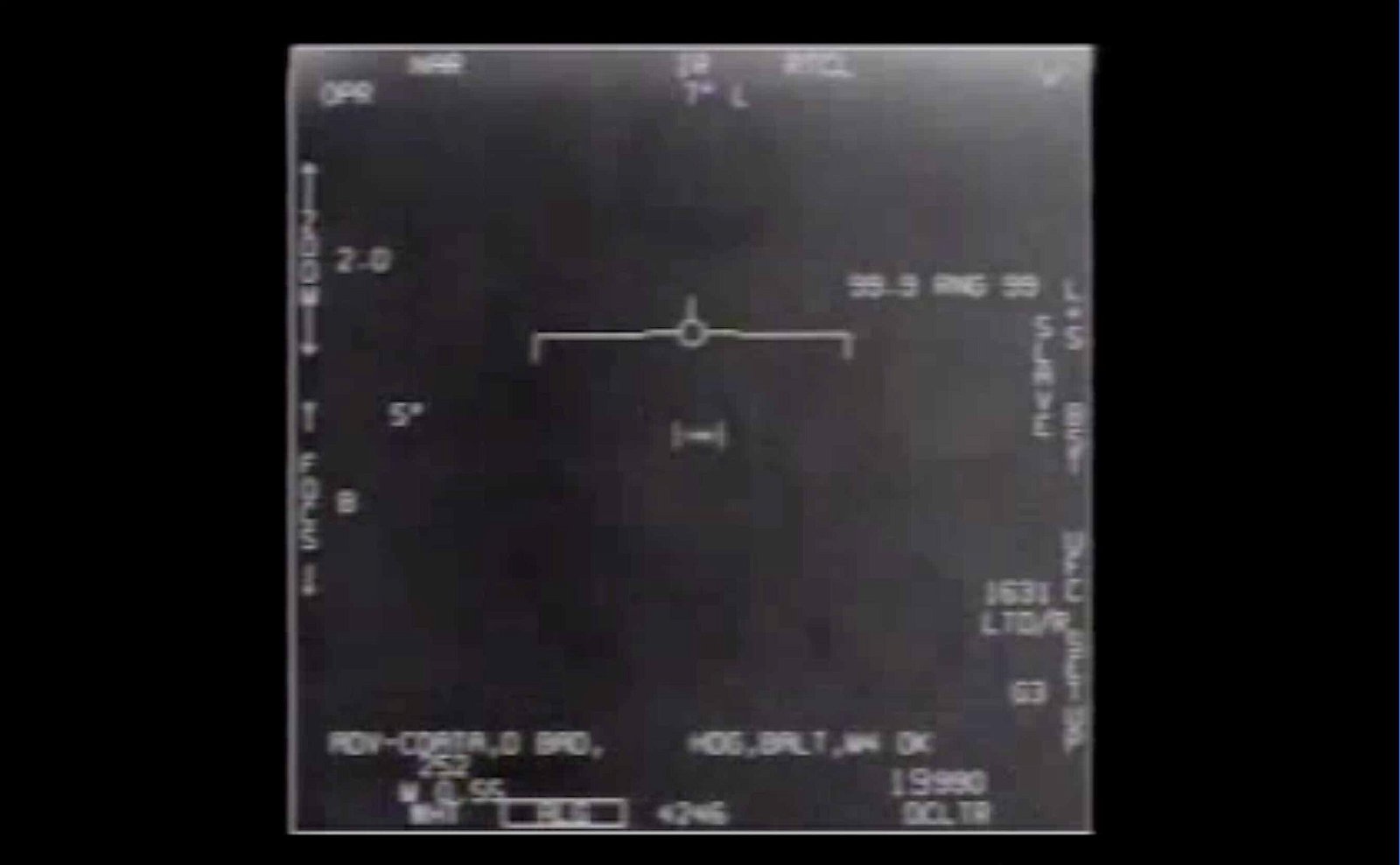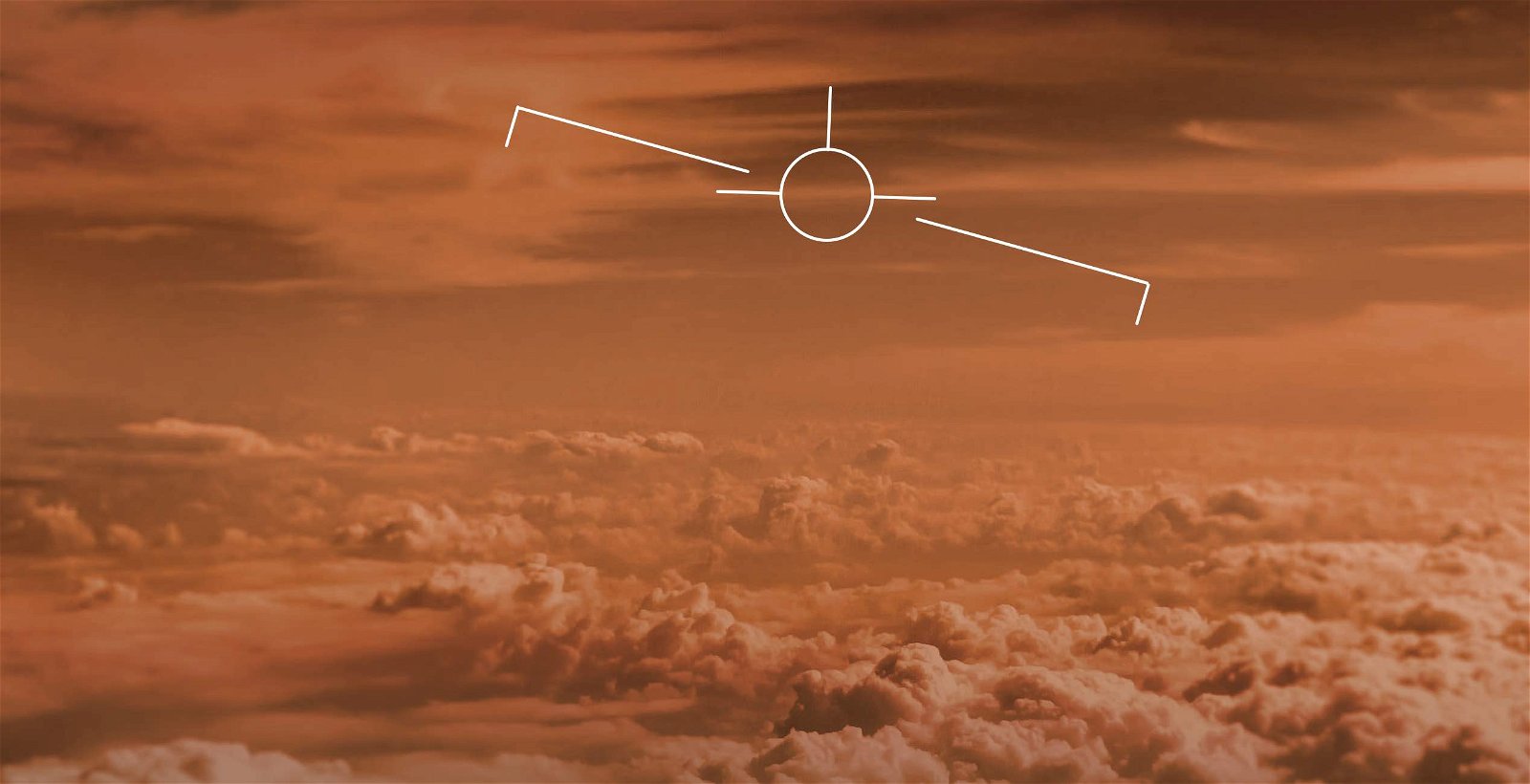A classified report detailing the Pentagon’s latest findings in its ongoing investigations into unidentified anomalous phenomena, or UAP, has been delivered to Congress, the U.S. Department of Defense (DOD) has revealed.
The 2023 Annual Report on Unidentified Anomalous Phenomena was presented to Congress by the DoD and the Office of the Director of National Intelligence (ODNI) on Wednesday, October 18, 2023, according to a Pentagon press release issued that same evening.
An unclassified version of the report, required by the National Defense Authorization Act (NDAA) for Fiscal Year 2022, as amended by the NDAA for Fiscal Year 2023, was also subsequently made available on the website of the All-domain Anomaly Resolution Office (AARO), the official office within the DoD tasked with investigations into mysterious aerial incursions and other phenomena encountered by U.S. personnel which currently remain unresolved.


What follows are several of the key findings detailed in the unclassified version of the 2023 Annual UAP Report released late on Wednesday:
291 New Reports of Unidentified Anomalous Phenomena
The latest UAP report primarily documents sightings that occurred between August 31, 2022 and April 30, 2023, with 274 of the reports having occurred during this period, and an additional 17 from previous reporting periods dating as far back as 2019, amounting to a combined total of 291 reports.
As of April 2023, AARO has reportedly been reviewing more than 800 UAP incident reports.
Collection Biases Remain, Despite Broadening Sources
The report, while acknowledging the persistence of a “strong but shifting collection bias,” notes that the abundance of UAP reports AARO has received that occurred within restricted military airspace has been tempered somewhat by reports from commercial pilots which show “a more diverse geographic distribution of UAP sightings across the United States.”
However, even the broadening number of reports from commercial aviators AARO has begun to integrate into its dataset still conveys what the report calls a “U.S.-centric collection bias that will grow significantly relative to the rest of the world.”
No Adverse Health Effects Associated with UAP Incidents
The report says that none of the reports collected between August 2022 and April 2023 indicated U.S. personnel or other witnesses had suffered any adverse health effects resulting from their unexplained encounters.
“ODNI and DoD acknowledge that health-related effects may appear at any time after an event occurs,” the report states, “therefore any reported health implications related to UAP will be tracked and examined if and when they emerge.”
Concerning Performance Characteristics
Some UAP reports involved objects that “potentially exhibited one or more concerning performance characteristics such as high-speed travel or unusual maneuverability,” the report states, raising concerns over possible flight safety issues that may result from UAP encountered by aviators. While acknowledging such safety risks, the report adds that “none of these reports suggest the UAP maneuvered to an unsafe proximity to civil or military aircraft” or posed any other direct threats to any aircraft or their crew and passengers.
No Evidence Linking Recent UAP Sightings to Foreign Actors
The report also states that none of the UAP reports from the period in question have been directly linked to foreign activities by any U.S. adversaries or other state actors.
Better Data is Needed
Insufficient data from various sensors and other collection platforms “can cause observational misperceptions,” the report adds, noting that as better data is collected over time, “most UAP will likely resolve to ordinary phenomena and significantly reduce the amount of UAP case submissions.”
UAP Reporting is Increasing Overall
The report states that reports involving unidentified anomalous phenomena are increasing, primarily due to what it characterizes as “deepening federal relationships and AARO’s ability to incorporate new reports into its adjudication and research process.
290 of the most recent batch of reports involved aerial encounters, while just one occurred “in the maritime domain.” There were no space-based UAP sightings during the recent period, nor were there any incidents involving transmedium phenomena that were observed.
An Abundance of Spherical Unidentified Anomalous Phenomena
Among the most common shapes reported in the recent batch of sightings, about a quarter (25%) involved sightings or objects characterized as orbs, round, or spherical objects.
Earlier this year during an April 2023 Senate hearing, Dr. Sean Kirkpatrick, Director of the DoD’s All-domain Anomaly Resolution Office (AARO), said at that time that more than half of all UAP reports collected by his Office involved observations of objects characterized as orbs or otherwise spherical objects with white, silver, or translucent coloration.
“That’s what we’re looking for and trying to understand what that is,” Kirkpatrick said during the hearing, shortly before sharing footage obtained by an MQ-9 Reaper Drone in the Middle East in 2022 where a flying object resembling a metallic sphere could be seen passing through the air.


While more than half (53%) of all sightings provided no details on the shape of the objects that were encountered, 6% of the incidents involved “irregular shapes,” while 4% involved oval-shaped objects, discs and rectangles each comprised 2% respectively, while cylindrical objects and triangles each comprised 1% respectively. An additional 5% of reports involved what were characterized as “Ambiguous Sensor Contact.”
Fewer UAP Displayed Lights
Of the 291 reports from the recent collection period, less than a quarter (21%) possessed lights, while the vast majority (79%) appeared to possess no lights, or at least none were displayed at the time of the observations.
It’s All About the Data
Intriguingly, the report also describes the data collection and analysis process as new UAP reports are acquired, noting that “AARO’s analysts scour multiple classified and unclassified databases to identify any existing data on each UAP case,” adding that investigations prioritize “technical sensor information that yields the highest quantity of pertinent, valuable data for review.”
High Speed Travel and Other Oddities
Based on the ongoing analysis of UAP sightings AARO has collected, the report states that “only a very small percentage of UAP reports display interesting signatures, such as high-speed travel and unknown morphologies.” Currently, most of the sightings AARO has collected involve objects that “demonstrate ordinary characteristics of readily explainable sources,” although a lack of data has prevented a large number of cases from being able to be resolved.


“For the few objects that do demonstrate characteristics of interest,” the report adds, “AARO is approaching these cases with objectivity and analytic rigor.”
Sensor Calibration to Help Rule Out Known Objects
Known objects, which include balloons, unmanned aircraft systems (UAVs), atmospheric events and other natural phenomena are all being considered in relation to ongoing sensor calibration efforts which are aimed to help rule out such objects or events, and offer future avenues for pilot training and algorithm development.
Declassification of “Full-Motion Videos” and More
Notably, the report states that AARO is “working to standardize and routinize” a declassification process for the release of data and “full-motion videos,” adding that this process had been employed prior the public display of such data during Congressional hearings held earlier this year.
UAP by Air, Space, and Sea
Within the report’s Appendix section, a new series of definitions is provided for UAP respective of the domains in which they are observed. These are Spaceborn UAP, defined as “Sources of anomalous detections above the Karman Line (i.e., 100 km above Earth’s mean sea level),” Airborne UAP, which occur “between Earth’s mean sea level and the Karman Line,” and Seaborn UAP, which involve “Sources of anomalous detections at or below Earth’s mean sea level within a body of water.”
Additionally, the report advises that integration between space and maritime domains into AARO’s current analytic efforts would be beneficial, though adding that “Collaboration with Space Force, U.S. Space Command, NRO, and NASA is well underway.”
Ongoing Controversy Over Unidentified Anomalous Phenomena
The 2023 annual report arrives amidst widespread public interest in the UAP subject that has ensued since 2017, following a report featured in The New York Times that reinvigorated the debate over mysterious aerial encounters reported by military personnel.
More recently, whistleblower allegations first reported by The Debrief in June 2023 resulted in additional scrutiny of the subject, garnering attention from lawmakers over the possibility that the U.S. has maintained secretive programs for decades that may have involved the acquisition of exotic technologies.
The 2023 Annual UAP Report was also preceded by the release of new government documents in recent weeks detailing sightings of aerial phenomena that have occurred over sensitive U.S. government facilities.


“Analyzing and understanding the potential threats posed by UAP is an ongoing collaborative effort involving many departments and agencies,” said Pentagon Press Secretary Brig. Gen. Pat Ryder in a statement following the release of the unclassified version of the 2023 Annual UAP Report, which appeared on AARO’s official website.
“The safety of our service personnel, our bases and installations, and the protection of U.S. operations security on land, in the skies, seas, and space are paramount.”
“We take reports of incursions into our designated space, land, sea, or airspaces seriously and examine each one,” Ryder added.
The entire 2023 Annual UAP Report can be read online at AARO’s website.
Micah Hanks is the Editor-in-Chief and Co-Founder of The Debrief. He can be reached by email at micah@thedebrief.org. Follow his work at micahhanks.com and on Twitter: @MicahHanks.

